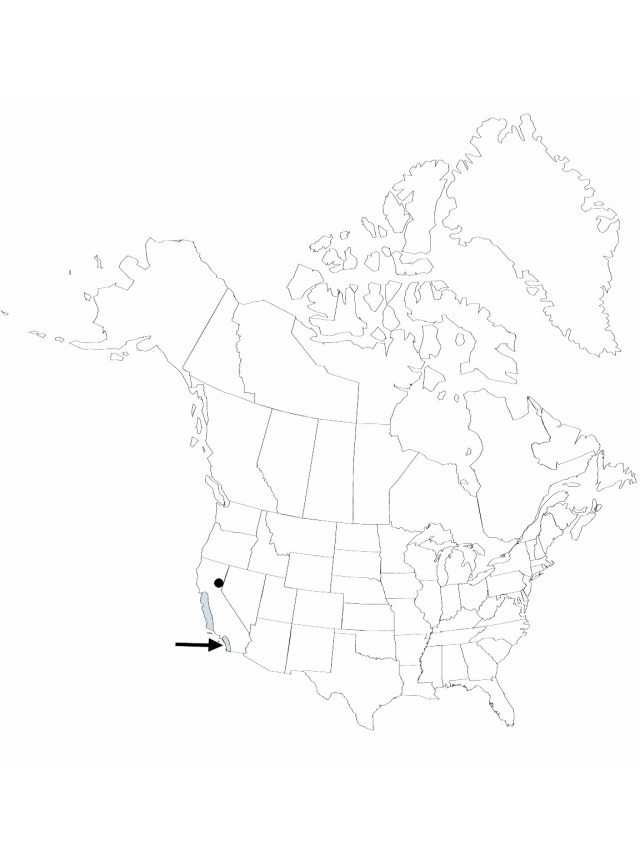Difference between revisions of "Juncus luciensis"
Memoirs of the New York Botanical Garden 39: 58, figs. 13c–e, 14. 1986.
FNA>Volume Importer |
FNA>Volume Importer |
Revision as of 21:00, 16 December 2019
Herbs, annual, cespitose, 0.07–0.6 dm. Culms to 160. Leaves to 1.5 cm × 0.1–0.3 mm. Inflorescences 1(–2) flowers; bracts subtending inflorescence 2, round to acutely ovate, inconspicuous, 0.4–1.6 mm, membranous. Flowers: tepals pale yellow-green until seeds ripen, tip darker, 1.6–3(–4.2) mm; ; outer and inner series nearly equal or outer slightly longer; stamens 2–3, filaments 0.6–0.9 mm, anthers 0.3–0.5 mm; style 0.2–0.4 mm, stigma 0.6–1.1 mm. Capsules pale yellow-green to reddish tinged until seeds ripen, 3-locular, ovoid to ellipsoid, 1.3–2.9 × 0.9–1.6 mm. Seeds globose-ovoid, 0.3–0.4 mm. n = 16.
Phenology: Flowering and fruiting spring-- to early summer.
Habitat: Wet sandy soil of seepage areas on sandstone, depressions in meadows, vernal pools, and streamsides
Elevation: 300–1900 m
Discussion
Juncus luciensis occurs in California in the Diamond and Santa Lucia mountains and the Transverse and Peninsular ranges.
Selected References
None.
